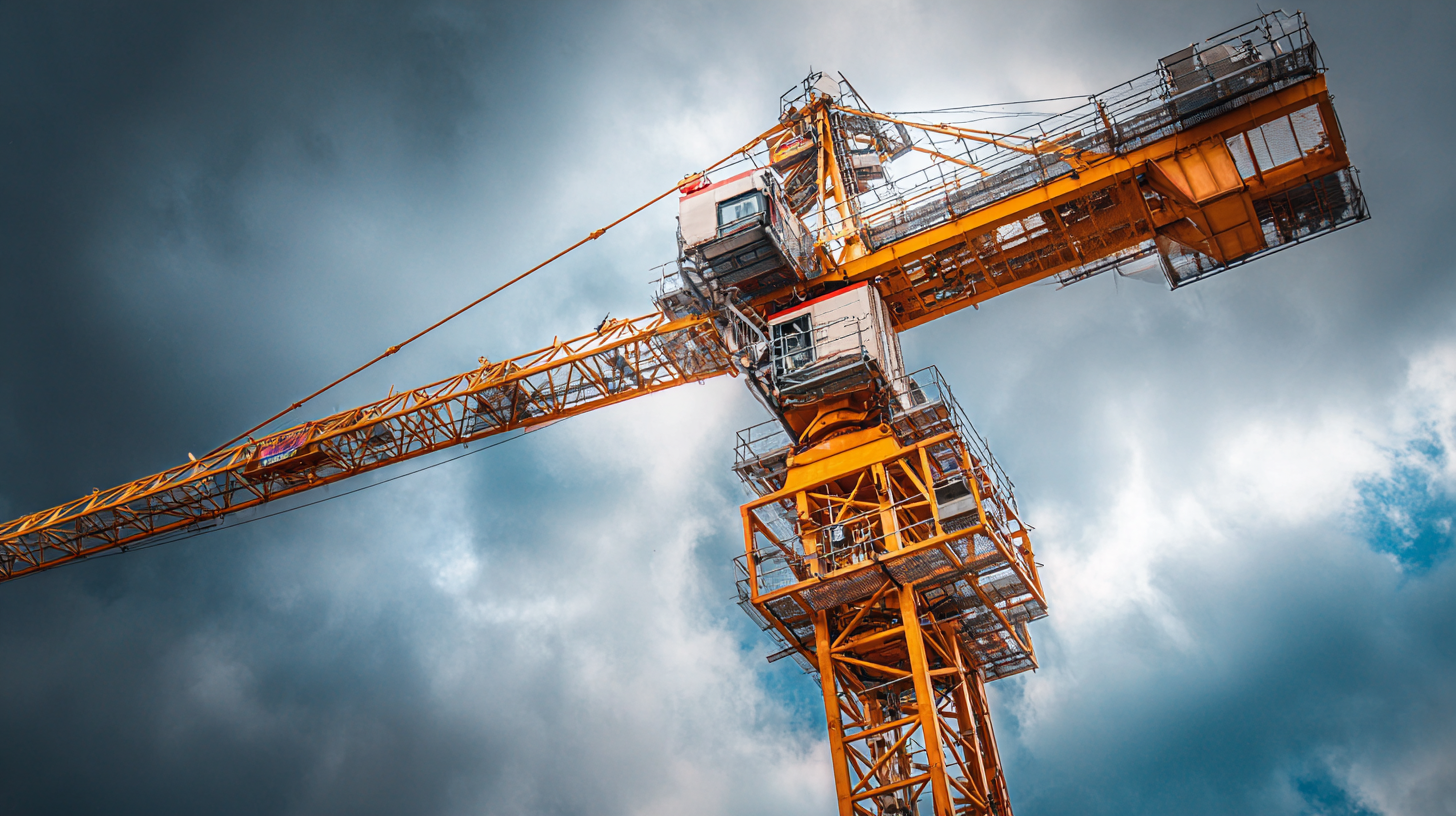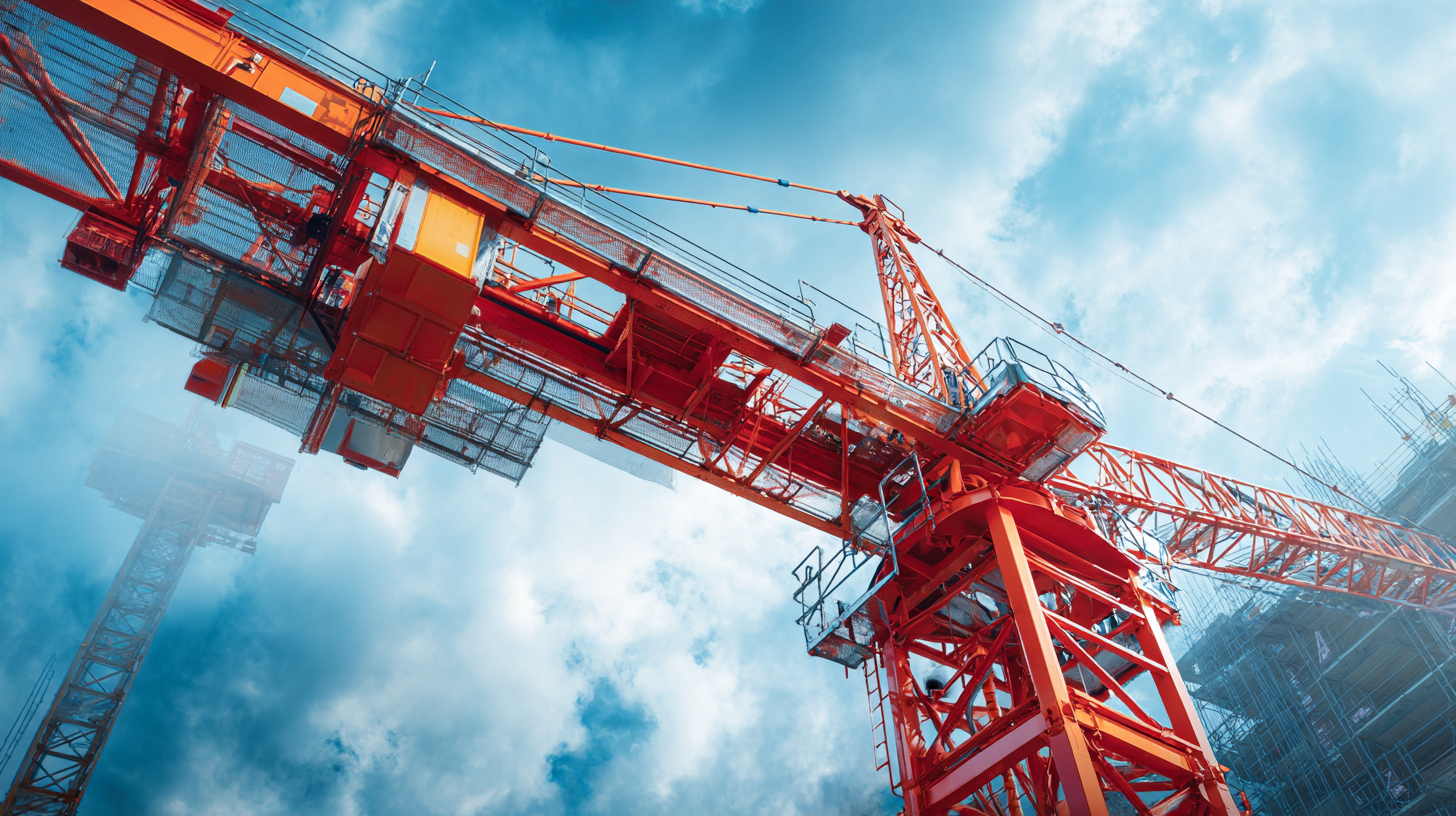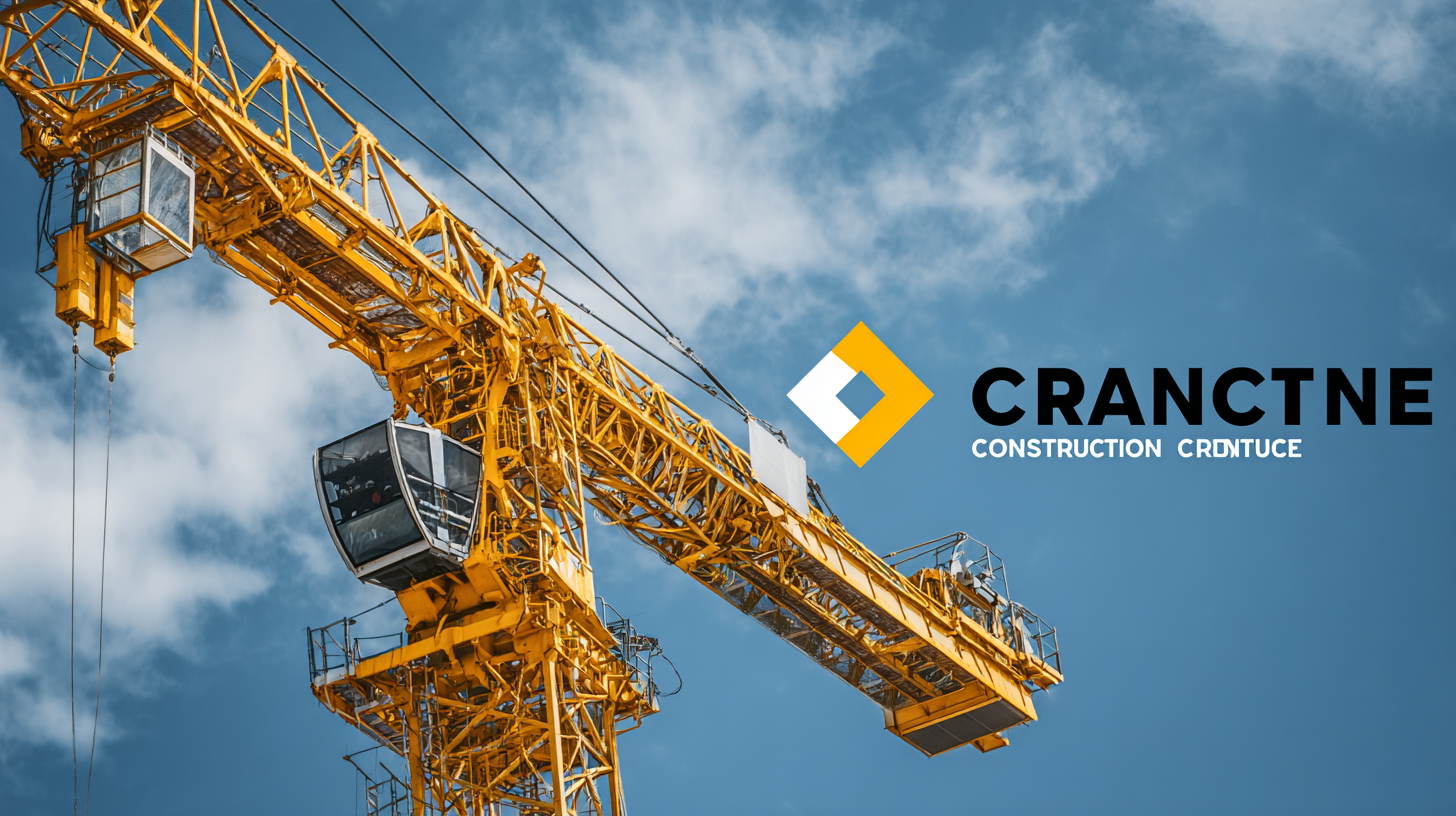 In the ever-evolving landscape of construction, the integration of advanced technologies is set to redefine operational efficiency, particularly in the realm of Construction Cranes. According to a report by MarketsandMarkets, the global construction crane market is expected to reach $45.3 billion by 2025, driven by rapid urbanization and infrastructural development. This surge underscores the critical role that cranes play in modern construction, with innovations aimed at enhancing safety, productivity, and overall performance.
Moreover, the advancements in after-sales service and reduced maintenance costs are pivotal, allowing construction companies to maximize uptime and minimize operational disruptions. As we delve into the key technology trends shaping this sector for 2025, it becomes evident that understanding these dynamics is essential for industry stakeholders seeking to leverage the full potential of Construction Cranes in their projects.
In the ever-evolving landscape of construction, the integration of advanced technologies is set to redefine operational efficiency, particularly in the realm of Construction Cranes. According to a report by MarketsandMarkets, the global construction crane market is expected to reach $45.3 billion by 2025, driven by rapid urbanization and infrastructural development. This surge underscores the critical role that cranes play in modern construction, with innovations aimed at enhancing safety, productivity, and overall performance.
Moreover, the advancements in after-sales service and reduced maintenance costs are pivotal, allowing construction companies to maximize uptime and minimize operational disruptions. As we delve into the key technology trends shaping this sector for 2025, it becomes evident that understanding these dynamics is essential for industry stakeholders seeking to leverage the full potential of Construction Cranes in their projects.
As we approach 2025, the construction industry is experiencing a transformative shift driven by digital technologies that significantly enhance operational efficiency. Leading the charge are innovations such as digital twins and automation, which are set to redefine how construction projects are planned and executed. Digital twins, in particular, facilitate real-time data visualization and predictive analysis, allowing construction firms to optimize resources, minimize delays, and reduce waste. This technological revolution is not only making construction smarter but also contributing to sustainability goals, as companies embrace tools that track carbon emissions and improve energy efficiency in building designs.
Furthermore, the rise of digital villages illustrates the broader impact of these technologies beyond urban settings, enhancing agricultural productivity and resource efficiency in rural areas. By integrating advanced digital solutions, such as AI-powered data extraction and interoperability systems, construction projects in both urban and rural contexts are becoming more interconnected and responsive to real-time challenges. These developments underscore the urgency for construction firms to adapt and innovate, preparing them for a future where efficiency and sustainability are paramount. As the industry navigates this digital transformation, the advantages of cutting-edge construction cranes equipped with these technologies will be pivotal in driving success from 2025 onwards.
| Tech Trend | Description | Efficiency Gain (%) | Environmental Impact |
|---|---|---|---|
| Automation & Robotics | Use of robots for repetitive tasks such as bricklaying and excavating. | 30% | Reduced waste and increased precision. |
| Building Information Modeling (BIM) | 3D modeling to improve project planning and execution. | 25% | Enhanced resource management reduces excess material use. |
| Drones | Aerial surveying and monitoring for site inspection. | 20% | Minimized site visits and enhanced safety. |
| 3D Printing | Automated construction of building components. | 40% | Lower emissions and waste generation. |
| AI & Machine Learning | Predictive analytics for project risk management. | 15% | Enhanced decision-making based on data analysis. |
The construction industry is experiencing a technological renaissance, particularly in crane technology, which is at the forefront of enhancing performance and safety standards. One of the most significant trends is the integration of smart technology into crane operations. Advanced sensors and IoT connectivity are transforming traditional cranes into intelligent machines that can monitor their surroundings, optimize load distribution, and improve maintenance practices. This data-driven approach not only increases operational efficiency but also drastically reduces the likelihood of accidents on site.
Another emerging trend is the focus on automation in crane operations. With the development of autonomous cranes, construction companies can achieve higher precision in lifting and placing materials, minimizing human error and increasing productivity. Additionally, these cranes can be programmed to perform complex tasks, allowing for more dynamic project management. As safety regulations evolve, the adoption of augmented reality (AR) and virtual reality (VR) technologies in training operators is becoming crucial. By simulating real-world scenarios, these tools ensure that operators are well-prepared to handle machinery safely, which ultimately elevates workplace safety standards across the industry.

The construction industry is experiencing a significant transformation as IoT technology redefines crane operations. By leveraging data-driven decision-making, construction companies enhance efficiency, safety, and productivity. According to a report by McKinsey, implementing IoT systems can boost labor productivity by up to 14% and deliver an increase in project efficiency by over 30%. This data-centric approach allows project managers to monitor crane usage in real-time, optimizing load management and reducing downtimes.
Tips: Regularly updating your IoT systems with the latest software can enhance analytical capabilities, ensuring you remain competitive. Additionally, investing in training for staff on data interpretation can significantly elevate operational outcomes.
Furthermore, the integration of IoT in cranes allows for predictive maintenance, effectively minimizing costly repair work. A study from Deloitte suggests that predictive maintenance can lead to a reduction in maintenance costs by 10-40%. Operators can foresee potential failures through real-time data analysis, paving the way for more proactive intervention strategies.
Tips: Ensure that your crane operators are equipped with mobile devices for instant data access. This boosts communication efficiency and enables quicker decision-making on-site.
This chart illustrates the adoption rate of various IoT technologies in crane operations from 2022 to 2025. The data highlights how different technologies contribute to improved efficiency and safety in construction projects.
As the construction industry becomes increasingly aware of its environmental impact, the role of smart cranes in promoting sustainability is gaining prominence. These advanced machines are designed not only for efficiency but also with eco-friendly operations in mind. Modern smart cranes utilize technology like IoT sensors and AI to optimize their performance, reducing energy consumption and minimizing waste. With real-time data analysis, these cranes can adjust operational parameters to ensure they are using the least amount of resources while maximizing productivity.
Furthermore, smart cranes contribute to green building initiatives by facilitating the use of sustainable materials and improving logistical efficiency. By streamlining the construction process, they help reduce the carbon footprint of projects. For instance, with enhanced precision and coordination, these cranes can significantly decrease the likelihood of accidents and delays, leading to less rework and material waste. As the construction sector continues to evolve, the integration of smart crane technology is critical in achieving a more sustainable and environmentally friendly future.
The construction industry is experiencing a significant transformation with the rise of innovative cranes that promise enhanced efficiency and cost savings. In 2023, the mobile crane market is valued at $19.15 billion, projected to grow at a compound annual growth rate (CAGR) of 6.59% from 2024 to 2031. This growth is indicative of a shift from traditional cranes to more advanced, technology-driven solutions that streamline construction processes.

When comparing traditional and innovative cranes, the benefits become evident. Innovative cranes are often equipped with advanced features that greatly improve operation speed and safety, leading to reduced labor costs over time. For instance, the yard crane market reached $785.3 million in 2023 and is expected to experience a 5% CAGR through 2032. This reflects an increasing investment in replacing outdated models.
Tips for Selecting the Right Crane:
1. Evaluate the specific requirements of your project to determine the type of crane that offers the best performance and cost-effectiveness.
2. Consider the fuel efficiency and engine performance of the crane, as these factors can significantly influence overall operational costs.
3. Keep an eye on the latest market trends and technology advancements to make informed decisions on crane investments that align with construction demands.


